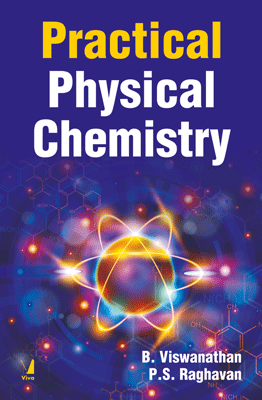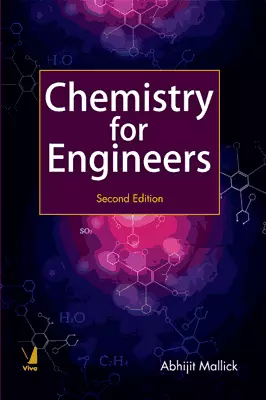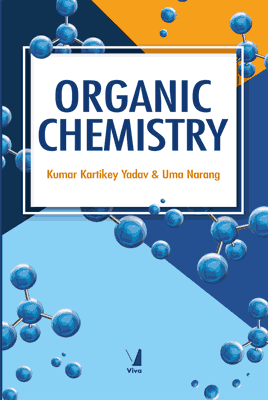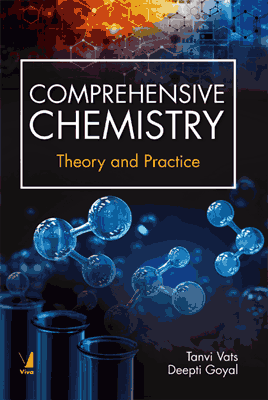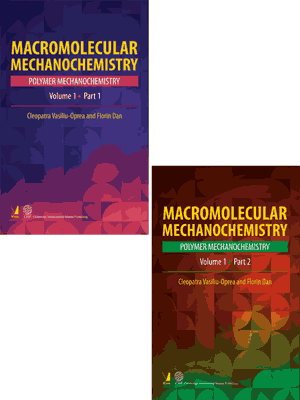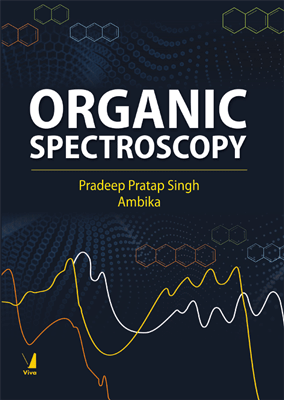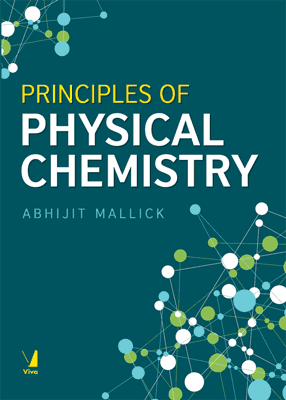Practical Physical Chemistry
Practical Physical Chemistry
₹625.50 ₹695.00 Save: ₹69.50 (10%)
Go to cartISBN: 9788130920696
Bind: Paperback
Year: 2017
Pages: 372
Size: 159 x 242 mm
Publisher: Viva Books Originals
Sales Territory: Worldwide
Description:
The authors have examined carefully a number of Indian Universities and evolved a common minimum laboratory programme and the result is this compilation. The experiments chosen are the minimum required for undergraduate programmes. Some experiments have been purposely included so that they can be covered at demonstration level and can be given as exercises at the postgraduate level. The authors have attempted to assemble the list of experiments from their experience and also have drawn upon the experience of the students who have undergone these laboratory courses and felt the inadequacy of the existing curriculum.
Target Audience:
People interested in Chemistry.
Contents:
PART I: DETERMINATION OF MOLECULAR WEIGHT • Experiment 1: Rast's Method • Experiment 2: Beckmann Method • Experiment 3: Viscosity Measurements • Experiment 4: Steam Distillation • PART II: THERMODYNAMIC PROPERTIES OF SOLUTION • Experiment 5: Solubility of Naphthalene in Benzene • Experiment 6: Partition Coefficient for the Distribution of Iodine between Water and Carbon tetrachloride • Experiment 7: Equilibrium Constant for Homogeneous Equilibria and Determining the Concentration of a given Solution • Experiment 8: Association Factor of Benzoic Acid • Experiment 9: Molecular Formula of Copper-ammonia Complex by the Partition Coefficient Method • PART III: THERMOCHEMICAL EXPERIMENTS • Experiment 10: Heat of Solution of Oxalic Acid front Solubility Measurements • Experiment 11: Heat of Neutralisation of a Strong Acid by a Strong Base • Experiment 12: Vapour Pressure and Enthalpy of Vapourisation of Water • PART IV: PHASE EQUILIBRIA • Experiment 13: Transition Temperature of a Salt Hydrate • Experiment 14: Critical Solution Temperature of Partially Miscible Liquid System • Experiment 15: Effect of Electrolytes on the Critical Solution Temperature • Experiment 16: Temperature-Composition Diagram for Two Component Liquid Azeotropic Systems • Experiment 17: Two Component Simple Eutectic Systems • Experiment 18: Two Component-Compound Forming Systems • Experiment 19: Three Component Liquid Systems: Acetic Acid - Benzene - Water • PART V: CHEMICAL KINETICS • Experiment 20: Acid-Catalysed Hydrolysis of Methyl Acetate • Experiment 21: Alkaline Hydrolysis of Ethylacetate Volumetry • Experiment 22: Alkaline Hydrolysis of Ethylacetate by Conductometry • Experiment 23: Activation Energy for the Acid - Catalysed Hydrolysis of Methylacetate • Experiment 24: Dissociation of Trichloroacetic Acid - Kinetic Method • Experiment 25: Hydrolysis of t-amyl iodide • Experiment 26: Determination of Order for the Peroxide - Iodide Reaction • Experiment 27: Determination of Order for the Persuiphate - lodide Reaction • Experiment 28: Kinetics of lodination of Acetone by Spectrophotometry • Experiment 29: Evaluation of First Order Rate Constant Potentiometry • Experiment 30: Kinetics of a Polymerization Reaction • Experiment 31: Kinetics of Catalytic Decomposition of Hydrogen Peroxide • Experiment 32: Thermal Decomposition of Potassium Chlorate • Experiment 33: Effect of Surface Area of Catalyst and Temperature on the Kinetics of Metal-Acid Reaction • Experiment 34: Catalytic Constant of an Acid • Experiment 35: Mechanism of the Oxidation of an Organic Compound from Kinetic Data • Experiment 36: Rate Constant for the Decomposition of Hydrogen Peroxide Over Platinum • Experiment 37: Polymerisation of methylmethacrylate Experiment 38: Light Intensity (in Einstein/minute) Emitted by a Source - Actinometry • Experiment 39: Inversion of Sucrose - Polarimetry • Experiment 40: Decomposition of Diacetone Alcohol Using Dilatometer • Experiment 41: Rate of Decomposition of Ammonium Nitrite (or Benzene Diazonium Chloride) • Experiment 42: Evaluation of Rate Constant by Guggenheim Method • Experiment 43: Effect of Ionic Strength on the Rate of Persulphate - Iodide Reaction • Experiment 44: Kinetics of Oxidation of Alcohol by Potassium Dichromate - Spectrophotometry • PART VI: SURFACE CHEMISTRY • Experiment 45: Adsorption Characteristics of Acetic Acid on Charcoal • Experiment 46: Surface Tension of a Liquid Using Stalagmometer • Experiment 47: Critical Micelle Concentration from Surface Tension Measurements • PART VII: PHOTOMETRY • Experiment 48: Verification of Beer and Lamberfs Law • Experiment 49: Jobts Continuous Variation Method • Experiment 50: Simultaneous Estimation of Manganese and Chromium in a Solution of Dichromate and Permanganate Mixture • Experiment 51: Spectrophotometric Determination of Critical Micelie Concentration • PART VIII: CONDUCTOMETRY • Experiment 52: Determination of Cell Constant • Experiment 53: Verification of Onsager's Equation and Determination of Equivalent Conductance at Infinite Dilution of Strong Electrolytes • Experiment 54: Verification of Ostwalds Dilution Law and Determination of Dissociation Constant of Weak Acids • Experiment 55: Verification of Walden's Rule • Experiment 56: Conductometric Determination of Critical Micelle Concentration • Experiment 57: Titration of a Strong Acid with a Strong Base • Experiment 58: Titration of a Weak cid with a Strong Base • Experiment 59: Titration of a Mixture of Strong and Weak Acid with a Strong Base • Experiment 60: Precipitation Titration and Determination of Solubility of a Sparingly Soluble Salt • PART IX: POTENTIOMETRY • Experiment 61: Transport Numbers of Silver and Nitrate Ions by l-Iittorf's Method • Experiment 62: Standard Electrode Potential of Cu and Ag Electrodes and Determination of the Potential Difference in a Concentration Cell • Experiment 63: Thermodynamic Parameters of a Reaction from EMF Measurement • Experiment 64: Formal Potential of a Redox Couple • Experiment 65: p1-I of a Buffer Solution • Experiment 66: Solubility Product and the Instability Constant • Experiment 67: Activity of Hydrogen Ions Using the Hydrogen Electrode • Experiment 68: Hydrolysis Constant and the Degree of Hydrolysis • Experiment 69: Titration of a Strong/Weak Acid With a Strong Base • Experiment 70: Titration of a Strong and Weak Acid Mixture with a Strong Base • Experiment 71: Dissociation of a Weak Acid by Potentiornetric Titration • Experiment 72: Redox Titration • Experiment 73: Composition of Zinc Ferrocyanide Complex by Potentiometric Titration • Experiment 74: Precipitation Titration of a Mixture of Chloride and Iodide Ions with Silver Nitrate • PART X: ELECTRODE PROCESSES • Experiment 75: Percentage Purity of Copper Sulphate - Electrogravimetry • Experiment 76: Decomposition Potential • Experiment 77: Polarisation Phenomenon • PART XI: VOLTAMETRY • Experiment 78: Reversibility of an Electrochemical Reaction and Determination of Concentration of a given Reducible lon - Polarography • Experiment 79: Formula and the Stability Constant of a Complex by Polarography • Experiment 80: Reversibility of a Redox Process and Determination of the Concentration of a given Solution - Cyclic Voltametry • PART XII: MISCELLANEOUS EXPERIMENTS • Experiment 81: Magnetic Susceptibility by Guoy Balance • Experiment 82: Transition Temperature and Heat of Transition by Differential Thermal Analysis • Experiment 83: Polymorphic Transformation of Solids - Dilatometry • Experiment 84: Electrochemical Nature of Corrosion and its Control • Experiment 85: Current - Voltage Characteristics of a p-n Junction Rectifier • Experiment 86: Dielectric Behaviour of Ceramics by Pse Transion • Experiment 87: Partial Molar Volume of Ethanol - Water Mixture • Experiment 88: Velocity of Sound in Liquids - Ultrasonic Interferometry • Experiment 89: Determination of Very Low Concentration of Metals in Solution by Flame Photometry • Experiment 90: Specific and Molar Refraction of a Liquid by Refractometry • Experiment 91: Dipole Moment of liquid • Experiment 92: Estimation of Avogadro Number • Experiment 93: Crystal Structure Determination - X-ray Diffractogram • Experiment 94: Surface Area Determination • Experiment 95: Excited State Propeperties of Molecules • Experiment 96: UV - Visible Spectroscopy • Experiment 97: Infrared Spectroscopy • Experiment 98: Electron Spin Resonance Spectroscopy • Experiment 99: Nuclear Magnetic Resonance Spectroscopy • Experiment 100: Molecular Modeling
About the Authors:
B. Viswanathan has been a faculty of the Department of Chemistry, Indian Institute of Technology, Madras for over 30 years. He is the recipient of Alexander Von Humboldt, Max Planck and JSPS fellowships. His areas of research interest include Catalysis, Material Science and Energy. He has over 700 publications, 12 books and 15 patents to his credit. He has won several awards like TANSA best Scientist award, CRSI, MRSI medals as well as eminent Scientist award of the Catalysis Society of India. He has been associated with a number of scientific societies and has extensively participated in chemical education. He is a member of boards of Studies of various Universities and institutions.
P.S. Raghavan has about 20 years experience in teaching physical chemistry at the UG and PG levels, as a member of the faculty of the Department of Chemistry of Madras Christian College, Chennai, besides 2 years of experience in Hindustan Lever Research Centre, Mumbai. He has about 40 papers and 8 books to his credit and is actively engaged in research and teaching, mainly in the field of physical chemistry and more particularly in surfactant chemistry.
